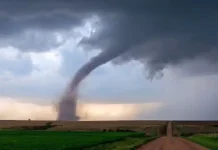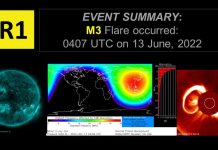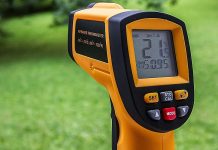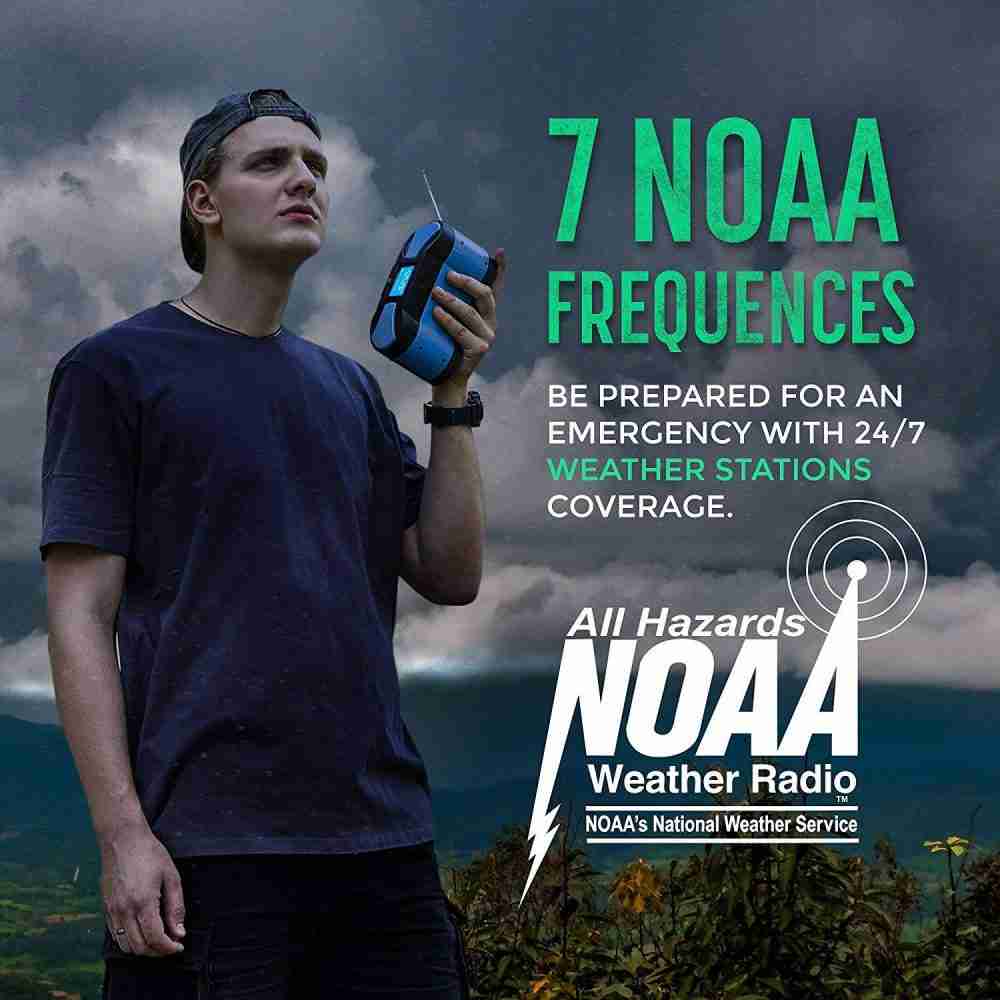In the ever-changing world of meteorology, the anticipation and accurate prediction of natural disasters such as hurricanes has become vital. But just how far in advance can we anticipate the arrival of a devastating storm? This article will explore the advances in technology and understanding that have allowed us to predict hurricanes with increasing accuracy and provide insights into the time frame in which these forecasts can be made. Brace yourselves for a journey into the fascinating realm of hurricane prediction.
Factors Affecting Hurricane Prediction
Ocean and Atmospheric Conditions
When it comes to predicting hurricanes, one of the key factors that we consider is the state of the ocean and atmospheric conditions. The temperature of the ocean’s surface and the depth of warm water are crucial in determining hurricane formation and intensification. Warmer water fuels the storm, providing the energy needed for its development. Additionally, wind patterns, such as the presence of strong vertical wind shear, can either hinder or enhance the growth of a hurricane. By monitoring and analyzing these conditions, meteorologists can gain valuable insights into the potential for hurricane formation.
Technology and Tools
Over the years, advancements in technology and tools have significantly improved our ability to predict hurricanes. Satellites equipped with infrared sensors allow us to monitor tropical disturbances in real-time, helping us identify potential storm systems early on. Doppler radar systems provide detailed information about storm structure, rainfall rates, and wind patterns, enabling us to track and forecast the movement of hurricanes with greater accuracy. These technological advancements, coupled with sophisticated computer models, have revolutionized hurricane prediction.
Historical Data and Patterns
Another important factor in predicting hurricanes is the analysis of historical data and patterns. By studying past hurricanes, we can identify common characteristics, such as formation locations, tracks, and intensities. This historical data helps us build a knowledge base and develop statistical models to estimate the likelihood of future events. It allows us to recognize patterns in hurricane behavior and make informed predictions based on these patterns. However, it is important to note that while historical data is valuable, it should not be the sole basis for predictions, as environmental conditions can vary significantly over time.
Meteorological Models
Meteorological models play a crucial role in hurricane prediction. These models use complex mathematical equations to simulate the behavior of the atmosphere and predict future weather conditions. By inputting current observations and data, these models can generate forecasts for variables such as wind speed, pressure, and rainfall associated with hurricanes. Through continuous refinement and improvement, these models have become increasingly accurate over time, helping us make more reliable predictions. However, it is important to acknowledge that these models are not infallible and can still have limitations and errors.
Short-term Predictions
12 to 24 Hours
In the short-term, meteorologists can provide predictions for hurricanes within a window of 12 to 24 hours. At this stage, observations from radar, satellites, and ground-based weather stations are used to track the hurricane’s movement and assess its current intensity. By analyzing these data and employing meteorological models, forecasters can make predictions about the storm’s path and anticipate any potential impacts on coastal areas. These short-term predictions are crucial for emergency preparedness and allow authorities to take immediate action to protect vulnerable communities.
48 Hours
Building upon the short-term predictions, forecasters can provide more refined predictions for hurricanes within a 48-hour window. With additional observations and model simulations, meteorologists can better assess the atmospheric conditions and predict the storm’s future track and intensity. These forecasts help communities prepare for the potential impact of the hurricane, allowing them to make informed decisions regarding evacuation, resource allocation, and emergency response.
72 Hours
Extending the prediction timeline further, forecasters can provide reasonably accurate predictions for hurricanes up to 72 hours in advance. By combining observed data, model simulations, and the expertise of meteorologists, forecasters can anticipate the storm’s track, intensity, and potential impacts on land. This advanced notice gives communities and emergency management agencies valuable time to finalize emergency plans, mobilize resources, and inform the public about the approaching hurricane.
Medium-term Predictions
3 to 5 Days
Beyond the 72-hour mark, medium-term predictions for hurricanes become more challenging due to the increasing level of uncertainty. However, advancements in technology, improved models, and better understanding of atmospheric processes have enabled meteorologists to provide forecasts within a range of 3 to 5 days. These predictions allow communities to make early preparations and take precautionary measures, such as reinforcing structures, stocking up on essential supplies, and ensuring the availability of emergency services.
6 to 7 Days
As we extend the medium-term predictions to 6 to 7 days, the level of uncertainty continues to increase. While forecasters can still provide general guidance regarding the future track and intensity of a hurricane, the margin of error becomes larger. It is important for the public and decision-makers to understand the limitations and uncertainties associated with these forecasts and to remain vigilant as the storm approaches.
8 to 10 Days
Predicting hurricanes beyond the 7-day mark becomes increasingly challenging, with a higher degree of uncertainty. While meteorologists may provide long-range forecasts within the 8 to 10-day range, these predictions are subject to significant change. The inherent complexities of atmospheric processes and the potential for rapid changes in environmental conditions make it difficult to accurately forecast hurricanes beyond this timeframe. It is crucial for individuals and communities to stay informed through reliable sources and pay attention to updates and changes in the forecast.
Long-term Predictions
10 to 14 Days
Long-term predictions for hurricanes, typically within the 10 to 14-day range, are considered highly uncertain. Forecasters rely on statistical and climatological models to provide an outlook on general areas of potential tropical development. These predictions are based on historical data, trends, and patterns observed over many years. While these long-term forecasts can provide a general indication of areas that may be more prone to hurricane activity, they should not be interpreted as precise predictions of specific storms.
15 to 20 Days
Beyond the 14-day mark, attempting to predict hurricanes becomes highly speculative and often unreliable. Due to the chaotic nature of the atmosphere and the limitations of current forecasting models, making accurate predictions for hurricanes beyond 15 to 20 days is impractical. While scientists continue to study and explore ways to improve long-term predictions, it is important for individuals and communities to focus on short and medium-term forecasts that are more reliable and actionable in terms of preparedness and response.
Advancements in Hurricane Prediction
Improved Data Gathering
Advancements in data gathering have significantly improved our ability to predict hurricanes. Satellites equipped with advanced sensors can provide real-time observations of storm systems, allowing meteorologists to track their development and analyze their behavior more accurately. Ground-based weather stations, buoys, and research vessels also play a crucial role in collecting data on oceanic and atmospheric conditions. The continuous improvement and integration of these data sources contribute to more reliable hurricane predictions.
Enhanced Computational Power
The increasing computational power of computers has revolutionized hurricane prediction. Forecast models now possess greater accuracy and precision due to the ability to process and analyze vast amounts of observational data in real-time. This enhanced computational power allows for more sophisticated simulations and modeling techniques, enabling meteorologists to make more accurate predictions. As computational technology continues to advance, we can expect further improvements in hurricane prediction capabilities.
Artificial Intelligence in Prediction
Artificial intelligence (AI) is also playing an increasingly important role in hurricane prediction. Machine learning algorithms are being developed and employed to analyze large datasets, identify patterns, and make predictions based on historical and real-time information. AI-powered models have the potential to improve the accuracy and speed of hurricane predictions by identifying complex relationships and factors that human analysts may overlook. As we continue to explore the potential of AI, it is likely to become a valuable tool in enhancing hurricane prediction.
Satellite and Radar Technology
Satellite and radar technology have significantly advanced our understanding and prediction of hurricanes. Satellites equipped with infrared sensors and imagers provide detailed information about storm structure, cloud formations, and temperature patterns, helping us track and predict the behavior of hurricanes accurately. Doppler radar systems provide insights into wind patterns, rainfall rates, and storm motion, allowing forecasters to monitor and analyze the intensification and movement of hurricanes in real-time. The integration of these satellite and radar technologies has greatly improved our ability to predict and track hurricanes.
Limitations in Hurricane Prediction
Uncertain Atmospheric Conditions
One of the primary challenges in hurricane prediction is the uncertainty surrounding atmospheric conditions. The atmosphere is a complex and chaotic system, making it difficult to precisely predict the future behavior of hurricanes. Small variations in initial conditions can lead to significant changes in the storm’s track, intensity, and overall behavior. While meteorologists strive to gather as much data as possible and make informed predictions, the inherent uncertainty in atmospheric conditions remains a limitation in hurricane prediction.
Complex Nature of Hurricanes
Hurricanes are inherently complex and dynamic systems, driven by a multitude of intricate processes. These processes involve the interaction between the ocean and the atmosphere, including the transfer of heat and moisture. The formation and intensification of hurricanes depend on various factors, such as sea surface temperatures, wind patterns, moisture availability, and vertical wind shear. Understanding and accurately modeling all these factors pose significant challenges, introducing uncertainty and potential errors in predictions.
Inherent Model Errors
Despite tremendous advancements in meteorological models, there are inherent errors and limitations associated with these models. These models rely on various assumptions, simplifications, and approximations to simulate the atmosphere’s behavior. While they provide valuable guidance, they are not perfect representations of the real-world system. Model errors can arise due to inaccuracies in initial conditions, insufficient data, or the inherent limitations of the equations used to represent atmospheric processes. Understanding and minimizing these errors are ongoing areas of research in hurricane prediction.
Prediction Errors and Variability
Hurricane prediction involves making forecasts based on the available data and models. However, it is important to acknowledge that prediction errors and variability exist due to the inherent uncertainties in the atmosphere’s behavior. These errors can arise from meteorological models’ limitations, imperfections in observational data, and unforeseen changes in atmospheric conditions. As a result, forecasted tracks and intensities can change as new data becomes available or as atmospheric conditions evolve. These uncertainties and variabilities should be considered when interpreting and using hurricane predictions.
The Role of Forecasts and Warnings
Informing Emergency Preparedness
Accurate and timely hurricane forecasts play a crucial role in informing emergency preparedness efforts. When communities receive early warnings about an approaching hurricane, they can take proactive measures to protect themselves and their property. Forecasts provide valuable information about the storm’s potential impacts, allowing individuals and communities to make informed decisions regarding evacuation, securing belongings, and making necessary preparations to withstand the storm’s effects. By heeding these forecasts, individuals can reduce the risks associated with hurricanes and enhance their overall preparedness.
Evacuation and Sheltering
One of the primary objectives of hurricane forecasts and warnings is to facilitate an orderly evacuation process. By accurately predicting the path and intensity of a hurricane, authorities can issue evacuation orders for at-risk areas, allowing residents to move to safer locations. These evacuations help mitigate the potential loss of life and reduce the strain on emergency response resources. Additionally, accurate forecasts enable authorities to plan and establish adequate sheltering facilities, ensuring the safety and well-being of those affected by the hurricane.
Allocation of Resources
Precise hurricane forecasts assist emergency management agencies in effectively allocating resources. When authorities have advance notice of an approaching hurricane, they can mobilize critical resources such as food, water, medical supplies, and search and rescue teams to areas likely to be impacted. Accurate forecasts enable efficient resource distribution, ensuring that the necessary support is available to affected communities in a timely manner. By leveraging forecasts, emergency responders can optimize their response efforts and minimize the potential impact of the hurricane.
Minimizing Loss of Life and Property
Ultimately, the goal of hurricane forecasts and warnings is to minimize the loss of life and property. By providing accurate predictions, individuals can take appropriate actions to protect themselves and their belongings. Timely evacuations, adequate preparation, and adherence to safety guidelines based on reliable forecasts significantly reduce the risks associated with hurricanes. By staying informed and heeding the warnings, communities can effectively mitigate the potential impacts of hurricanes and enhance overall resilience.
Hurricane Prediction vs. Track Forecasting
Focus on Predicting
While track forecasting is an integral part of hurricane prediction, it is important to distinguish between the two. Hurricane prediction encompasses a broader scope, including predicting various aspects of a hurricane, such as its intensity, rainfall, and potential impacts. Track forecasting specifically focuses on predicting the path or trajectory of a hurricane. Though closely related, these two concepts represent distinct elements within the larger discipline of hurricane forecasting.
Path and Intensity
Track forecasting predominantly revolves around predicting the future path of a hurricane. By analyzing atmospheric conditions, historical data, and model simulations, meteorologists can provide progressions for where a hurricane is likely to go. This information helps communities and emergency management agencies plan their response efforts accordingly. In addition to track forecasting, intensity predictions provide insights into the future strength of a hurricane, including wind speeds and central pressure. This information aids in assessing the potential impacts and risks associated with the approaching storm.
Localized Effects on Land
In addition to predicting the path and intensity of a hurricane, forecasting models can provide information about the localized effects on land. Predictions extend beyond the hurricane’s track to include factors such as storm surge, precipitation patterns, and potential for tornadoes. These forecasts enable communities to understand the specific risks and vulnerabilities they may face, allowing them to take appropriate actions to protect lives and property. By incorporating these localized effects into predictions, the overall accuracy and usefulness of hurricane forecasts are enhanced.
Case Studies in Hurricane Prediction
Hurricane Harvey (2017)
Hurricane Harvey, which made landfall in Texas in 2017, serves as a significant case study in hurricane prediction. This storm presented several challenges and showcased both the strengths and limitations of current prediction capabilities. The forecast for Harvey initially focused on predicting a landfall near Corpus Christi, Texas. However, the storm veered slightly to the east and intensified rapidly, causing it to make landfall near Rockport, Texas, instead. This deviation highlighted the inherent uncertainties in predicting the exact track and intensity of a hurricane.
Despite this initial deviation, forecasters were able to provide relatively accurate predictions regarding the storm’s slow movement and the potential for historic rainfall. This insight allowed emergency management agencies and communities to prepare for prolonged and widespread flooding. The forecasts helped in coordinating evacuation efforts, positioning resources, and informing the public about the severity of the impending rainfall. The accuracy and timeliness of these predictions were instrumental in mitigating the impacts of Hurricane Harvey and ensuring the safety of countless individuals.
Hurricane Sandy (2012)
Another notable case study in hurricane prediction is Hurricane Sandy, which impacted the northeastern United States in 2012. This storm posed unique challenges to forecasters due to its unusual track and the complex interactions with other weather systems. Initially, the models struggled to accurately predict Sandy’s intensity, and there was significant uncertainty regarding its eventual track. As the storm approached the coast, it took an unexpected westward turn, resulting in an unprecedented landfall near the New Jersey coastline.
While the track prediction for Hurricane Sandy had notable errors, forecasters were able to provide sufficient warnings about the potential impacts of the storm. The predictions emphasized the risk of coastal flooding, high winds, and heavy rainfall. These forecasts prompted the implementation of evacuation orders, resulting in the successful evacuation of numerous coastal communities. The accurate prediction of the storm’s effects and its potential for significant damage allowed emergency responders and the public to take appropriate actions, leading to a more effective and organized response.
Hurricane Katrina (2005)
Hurricane Katrina, one of the most devastating storms in the history of the United States, serves as a tragic case study in hurricane prediction. Despite advancements in forecasting technology and data, the prediction for Hurricane Katrina had significant limitations, leading to catastrophic consequences. The forecasting models initially predicted that Katrina would make landfall near the Florida Panhandle. However, the storm unexpectedly intensified and took a sudden turn, striking the vulnerable city of New Orleans.
The accuracy of the initial track forecast was compromised, and the potential impact on New Orleans was underestimated. This resulted in inadequate preparedness and response efforts, leading to widespread devastation and loss of life. While forecasters did provide warnings about the storm’s strength and potential impacts, the inaccuracies in the track prediction hindered the effectiveness of evacuation orders and resource allocation. Hurricane Katrina highlighted the need for continuous improvement in hurricane prediction and reinforced the importance of preparedness and response at all levels of government and society.
The Future of Hurricane Prediction
Improving Accuracy and Precision
As technology continues to advance, we can expect further improvements in the accuracy and precision of hurricane prediction. The integration of advanced sensors, enhanced computational power, and machine learning algorithms will enhance our understanding of hurricanes’ behavior and enable more precise forecasting. By refining models, incorporating additional data sources, and improving simulations, meteorologists aim to reduce uncertainties and errors in hurricane predictions, providing communities with more reliable and actionable forecasts.
Early Warning Systems
Early warning systems will continue to play a vital role in hurricane prediction. Advances in satellite and radar technology, coupled with improved modeling techniques, will enable forecasters to detect developing storm systems at an earlier stage. These early warnings provide essential lead time for communities to prepare and respond effectively to potential hurricanes. By investing in robust early warning systems and ensuring their accessibility to vulnerable communities, we can improve overall hurricane preparedness and response.
Public Education and Awareness
Enhancing public education and awareness will be crucial for the future of hurricane prediction. It is essential to educate individuals and communities about the science behind hurricane prediction, the limitations of forecasts, and the importance of preparedness measures. By promoting a culture of understanding and preparedness, we can empower individuals to make informed decisions, participate in evacuation efforts, and prioritize safety during hurricane events. Public education campaigns, community engagement programs, and accessible information resources will be key components in fostering a resilient society.
Mitigation Strategies for Vulnerable Areas
The future of hurricane prediction also involves a strong emphasis on mitigation strategies for vulnerable areas. As we improve our understanding of hurricanes and their impacts, it becomes critical to implement measures that reduce the risks associated with these extreme weather events. This includes implementing stringent building codes, enhancing coastal infrastructure, preserving natural barriers, and implementing effective land use planning. Investing in resilient infrastructure and adopting sustainable practices will help minimize the potential impacts of hurricanes and protect communities from future storm events.
In conclusion, predicting hurricanes is a complex and multifaceted process, influenced by various factors such as oceanic and atmospheric conditions, technological advancements, historical data, and meteorological models. While short-term predictions offer reasonably accurate forecasts within a 72-hour window, medium and long-term predictions become increasingly uncertain. Advancements in technology, improved data gathering, enhanced computational power, and the integration of artificial intelligence hold great promise for improving hurricane prediction accuracy in the future. However, it is important to acknowledge the inherent limitations and challenges associated with predicting the behavior of these dynamic and unpredictable weather systems. By leveraging accurate and timely forecasts, individuals, communities, and decision-makers can better prepare, respond, and mitigate the potential impacts of hurricanes, ultimately reducing the loss of life and property.







































